#hindu representation
Text
In addition to my Monkey Man post from earlier, the always kind & sweet Aparna Verma (author of The Phoenix King, check it out) asked that I do a thread on Hijras, & more of the history around them, South Asia, mythology (because that's my thing), & the positive inclusion of them in Monkey Man which I brought up in my gushing review.
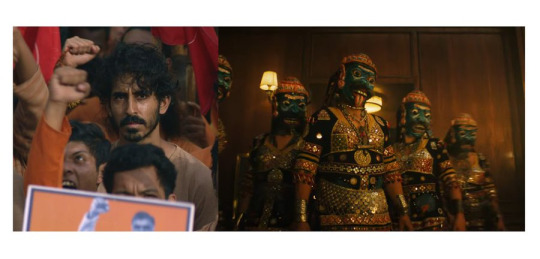
Hijra: They are the transgender, eunuch, or intersex people in India who are officially recognized as the third sex throughout most countries in the Indian subcontinent. The trans community and history in India goes back a long way as being documented and officially recognized - far back as 12th century under the Delhi Sultanate in government records, and further back in our stories in Hinduism. The word itself is a Hindi word that's been roughly translated into English as "eunuch" commonly but it's not exactly accurate.
Hijras have been considered the third sex back in our ancient stories, and by 2014 got official recognition to identify as the third gender (neither male or female) legally. Pakistan, Nepal, Bangladesh, and India have accepted: eunuch, trans, intersex people & granted them the proper identification options on passports and other government official documents.
But let's get into some of the history surrounding the Hijra community (which for the longest time has been nomadic, and a part of India's long, rich, and sometimes, sadly, troubled history of nomadic tribes/people who have suffered a lot over the ages. Hijras and intersex people are mentioned as far back as in the Kama Sutra, as well as in the early writings of Manu Smriti in the 1st century CE (Common Era), specifically said that a third sex can exist if possessing equal male and female seed.
This concept of balancing male/female energies, seed, and halves is seen in two places in South Asian mythos/culture and connected to the Hijra history.
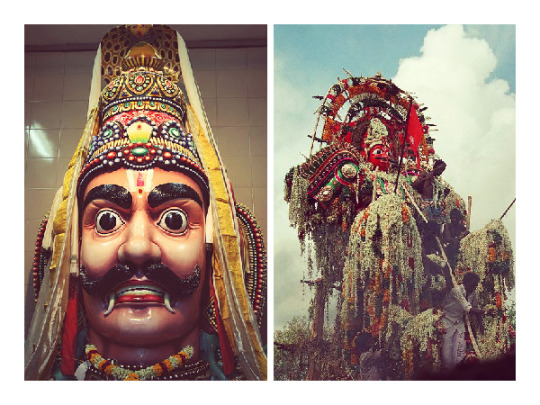
First, we have Aravan/Iravan (romanized) - who is also the patron deity of the transgender community. He is most commonly seen as a minor/village deity and is depicted in the Indian epic Mahabharata. Aravan is portrayed as having a heroic in the story and his self-sacrifice to the goddess Kali earns him a boon.

He requests to be married before his death. But because he is doomed to die so shortly after marriage, no one wants to marry him.
No one except Krishna, who adopts his female form Mohini (one of the legendary temptresses in mythology I've written about before) and marries him. It is through this union of male, and male presenting as female in the female form of Mohini that the seed of the Hijras is said to begun, and why the transgender community often worships Aravan and, another name for the community is Aravani - of/from Aravan.
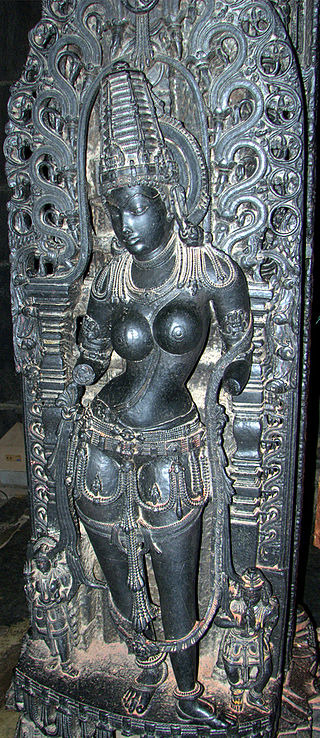
But that's not the only place where a gender non conforming divine representation can be seen. Ardhanarishvara is the half female form of lord Shiva, the destroyer god.
Shiva combines with his consort Parvarti and creates a form that represents the balancing/union between male/female energies and physically as a perfectly split down the middle half-male half-female being. This duality in nature has long been part of South Asian culture, spiritual and philosophical beliefs, and it must be noted the sexuality/gender has often been displayed as fluid in South Asian epics and the stories. It's nothing new.

Many celestial or cosmic level beings have expressed this, and defied modern western limiting beliefs on the ideas of these themes/possibilities/forms of existence.
Ardhanarishvara signifies "totality that lies beyond duality", "bi-unity of male and female in God" and "the bisexuality and therefore the non-duality" of the Supreme Being.
Back to the Hijra community.
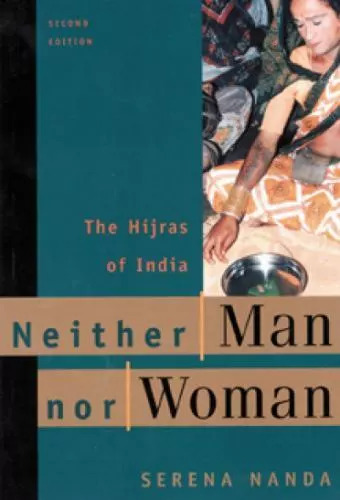
They have a complex and long history. Throughout time, and as commented on in the movie, Monkey Man, the Hijra community has faced ostracization, but also been incorporated into mainstream society there. During the time of the Dehli Sultanate and then later the Mughal Empire, Hijras actually served in the military and as military commanders in some records, they were also servants for wealthy households, manual laborers, political guardians, and it was seen as wise to put women under the protection of Hijras -- they often specifically served as the bodyguards and overseers of harems. A princess might be appointed a Hijra warrior to guard her.

But by the time of British colonialism, anti-Hijra laws began to come in place folded into laws against the many nomadic tribes of India (also shown in part in Monkey Man with Kid (portrayed by Dev Patel) and his family, who are possibly
one of those nomadic tribes that participated in early theater - sadly by caste often treated horribly and relegated to only the performing arts to make money (this is a guess based on the village play they were performing as no other details were given about his family).
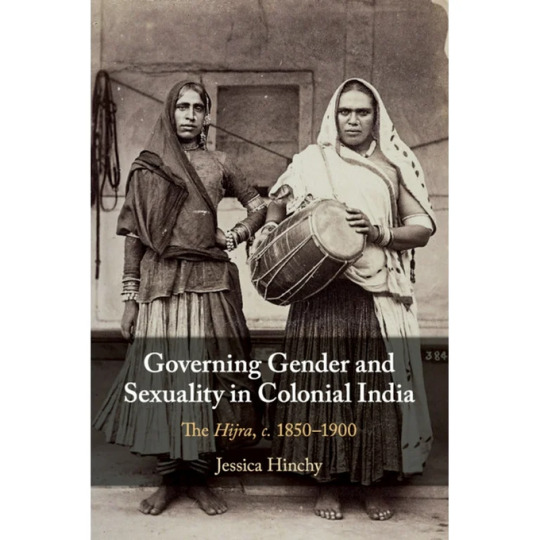
Hijras were criminalized in 1861 by the Indian Penal Code enforced by the British and were labeled specifically as "The Hijra Problem" -- leading to an anti-Hijra campaign across the subcontinent with following laws being enacted: punishing the practices of the Hijra community, and outlawing castration (something many Hijra did to themselves). Though, it should be noted many of the laws were rarely enforced by local Indian officials/officers. But, the British made a point to further the laws against them by later adding the Criminal Tribes Act in 1871, which targeted the Hijra community along with the other nomadic Indian tribes - it subjected them to registration, tracking/monitoring, stripping them of children, and their ability to sequester themselves in their nomadic lifestyle away from the British Colonial Rule.
Today, things have changed and Hijras are being seen once again in a more positive light (though not always and this is something Monkey Man balances by what's happened to the community in a few scenes, and the heroic return/scene with Dev and his warriors). All-hijra communities exist and sort of mirror the western concept of "found families" where they are safe haven/welcoming place trans folks and those identifying as intersex.
These communities also have their own secret language known as Hijra Farsi, which is loosely based on Hindi, but consists of a unique vocabulary of at least 1,000 words.
As noted above, in 2014, the trans community received more legal rights.
Specifically: In April 2014, Justice K. S. Radhakrishnan declared transgender to be the third gender in Indian law in National Legal Services Authority v. Union of India.
Hijras, Eunuchs, apart from binary gender, be treated as "third gender" for the purpose of safeguarding their rights under Part III of our Constitution and the laws made by the Parliament and the State Legislature. Transgender persons' right to decide their self-identified gender is also upheld and the Centre and State Governments are directed to grant legal recognition of their gender identity such as male, female or as third gender.
I've included some screenshots of (some, not all, and certainly not the only/definitive reads) books people can check out about SOME of the history. Not all again. This goes back ages and even our celestial beings/creatures have/do display gender non conforming ways.
There are also films that touch on Hijra history and life. But in regards to Monkey Man, which is what started this thread particularly and being asked to comment - it is a film that positively portrayed India's third sex and normalized it in its depiction. Kid the protagonist encounters a found family of Hijras at one point in the story (no spoilers for plot) and his interactions/acceptance, living with them is just normal. There's no explaining, justifying, anything to/for the audience. It simply is. And, it's a beautiful arc of the story of Kid finding himself in their care/company.
#hijra#trans representation#monkey man#dev patel#transgender#trans rights#trans rights are human rights#third sex#indian history#indian culture#colonialism#imperialism#south Asian mythos#South Asian myths#Aravan#Iravan#Mahabharata#hindu mythology#hindu gods#kali goddess#krishna#hindu mythology art#Ardhanarishvara#Shiva#Parvarti#sexuality#gender fluid#fluid sexuality#trans community#transgender rights
491 notes
·
View notes
Text

Boothill
#PLEASE COME HOME#had to conjure up images from my childhood#boothill before the trauma or something#used to have a strong southern accent as a kid fun fact#my teacher was this lady with a thick southern accent so I just spoke like her 😭#you can imagine a little Indian kid running around speaking like 54 y/o Christian conservative white woman#I was tacking on ‘amen’ after saying my Hindu prayers even though I had no idea what it meant 💀#I feel like the south gets a bad rep#it’s no that bad down here guys I promise 😭😭#ty Boothill for the representation I guess#even if he actually lives in space#honkai star rail#hsr#hsr fanart#boothill#my art#art#digital art#fanart#procreate#sketch#haliai art#hsr boothill#his backstory is so sad man
108 notes
·
View notes
Text
Krishna : No thanks.
Krishna : I'm god.
#krishna#gopiblr#kanhaiya#krishnablr#kanha#desi stuff#krishna is the best#hindu mythology#mahabharat memes#is this geeta?#an accurate representation#he's so cute#my pretty boy
76 notes
·
View notes
Text
This is something that's been tugging at my heartstrings for as long as I can remember.
I'd be lying if I said I've never quite felt as the gender that was assigned to me at birth. Because I did. I was born a cisgender male and it felt right. Or, at the very least, it felt partially right. Like it was always just one half of what or who I really am.
I would adamantly try to deny these strange feelings I'd get while coming across terms such as "non-binary" or "intersex".
Because we've always been taught that there only exist two sexes: male and female.
Transgender people are viewed as "strange" or "diseased" by most cishet folk because of their simple inability to comprehend those who are different from them.
However, they are, at the very least, becoming more and more visible in both media coverage and the regular everyday life. And their existence had become much more digestible to the general mainstream culture under the oversimplified explanation how transgender people are just "people who feel like, and desire to be, the opposite gender".
Then what can someone tell me about those of us who've always felt like multiple genders at once.
As previously mentioned...
I was born and raised a male but always felt like the other half of me is missing. Like this gender identity I possess is only half of the entire truth.
Because I've always felt like I was meant to be both a man and a woman at the same time. And this is not just when speaking about my identity, but body and mind as well.
Even my genital always felt incomplete without the lady bits.
And that's when I learned of the old Greek legend of a "Hermaphrodite", or "Hermaphroditus".
Now, for those of you who are not familiar with this term, let me explain...
There are multiple versions of this ancient myth, but they all share one major important aspect in common.
Hermaphroditus was the bastard child of Aphrodite, goddess of love, and the messenger god - Hermes.
"It" was described as a two-sexed being of both male and female likeness and was considered an important symbol in fertility and marriage unions, as it symbolized both "power of a man" and "beauty and compassion of a woman".
But, as it turns out, Ancient Greek people were not the only nation known for such a tale.
Majority of the Hinduistic pantheon are gods and goddesses described as at least partially androgynous.
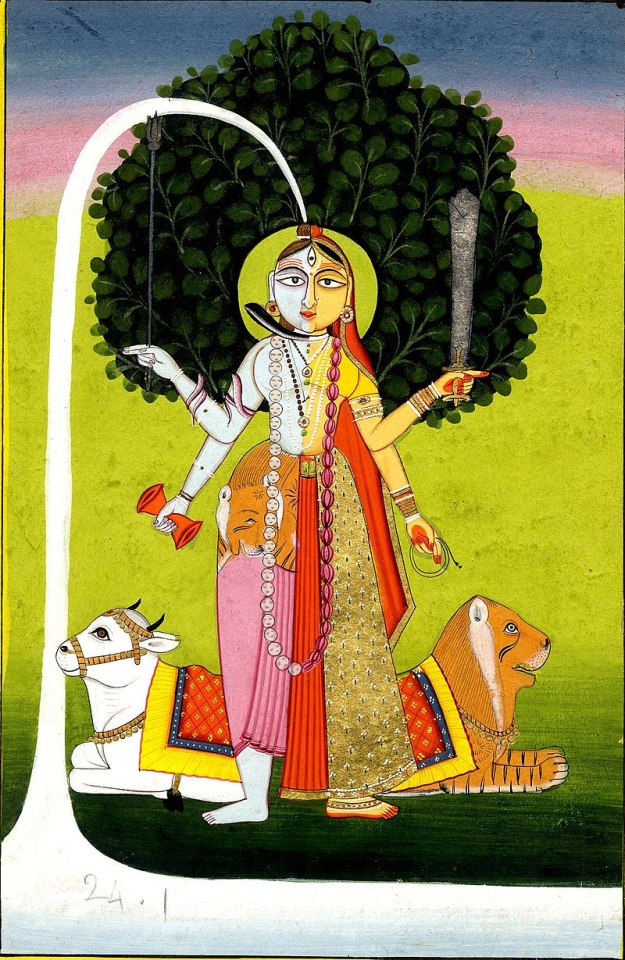
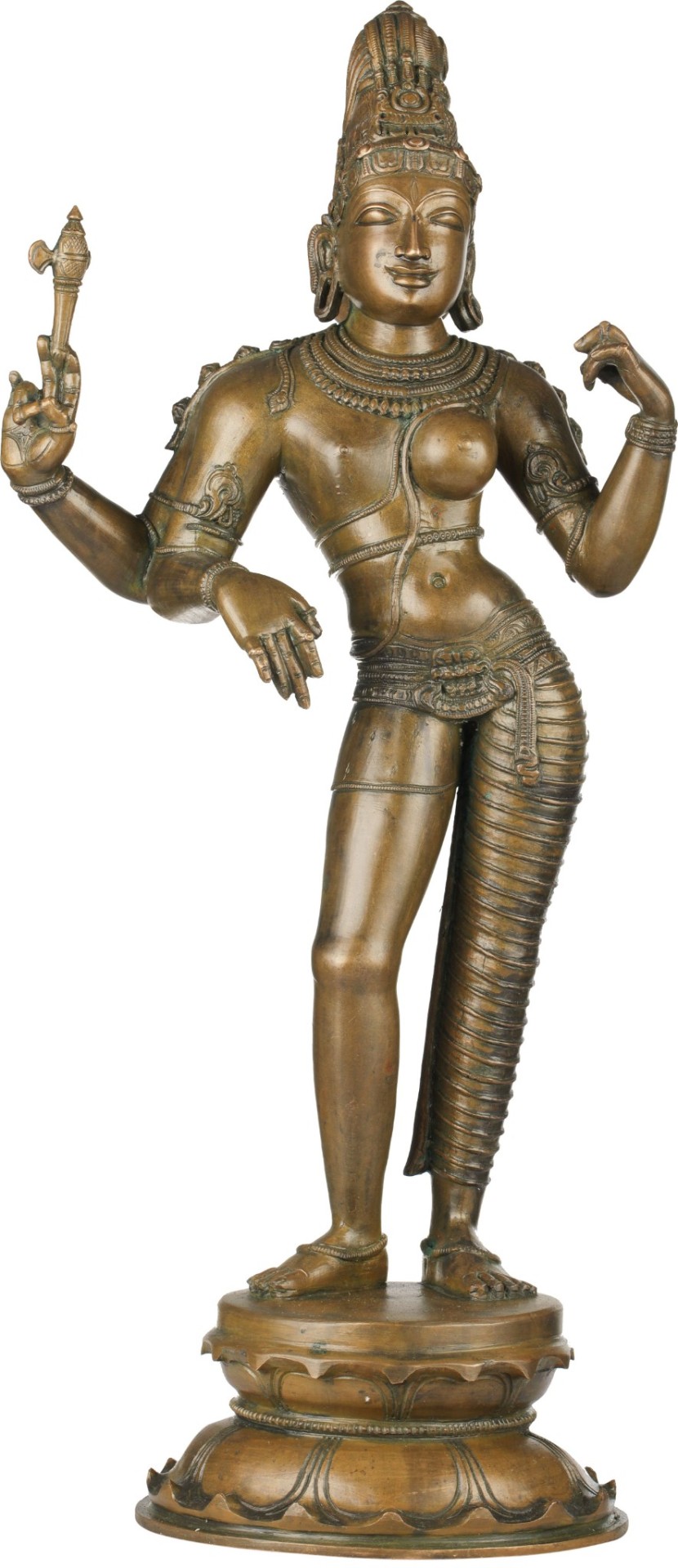
Come forth, Ardhanarishvara
The one whose name would literally translate "Half-Female Lord" from Sanskrit.
The form taken by the very supreme god Shiva when merging with his consort goddess, Parvati.
Ardhanarishvara represents the synthesis of masculine and feminine energies of the universe (Purusha and Prakriti) and illustrates how Shakti, the female principle of God, is inseparable from (or the same as, according to some interpretations) Shiva, the male principle of God, and vice versa. The union of these principles is exalted as the root and womb of all creation. Another view is that Ardhanarishvara is a symbol of Shiva's all-pervasive nature. And that's not even mentioning traditional Hindu notion of the "third gender" people known as hijras.
Or who can forget the gender nonconforming individuals of ancient Hawaiian and certain Native American tribes. "Two-Spirit" individuals, as they are called today.
These men and women behaved in a manner befitting both sexes and we're often permitted or even downright encouraged to participate in roles attributed to the opposite sex.
Mahū, as they were called in Hawaii, were "third gender" people with traditionally spiritual and religious roles in their society. Historically, it's been used primarily for those born male, but it's meaning had evolved since then and has come to refer to multitude of genders and sexual orientations in modern Hawaii.
Māhū were particularly respected as teachers, usually of hula dance and chant. In pre-contact times māhū performed the roles of goddesses in hula dances that took place in temples which were off-limits to women. Māhū were also valued as the keepers of cultural traditions, such as the passing down of genealogies. Traditionally parents would ask māhū to name their children.
The term itself may be used either pejoratively or respectfully when referring to modern LGBTQI+ people of Hawaii.
But yes
All these traditions and mythologies aside,
Hermaphroditism and Intersexuality had always been so very intriguing and inviting for me. Imagine my surprise to learn that over half of the plant world is hermaphroditic and in possession of both male and female reproductive parts. The same thing applies to creatures such as snails, slugs, leeches,etc. Not to mention a pseudo-hermaphroditism that occurs in female hyenas and cassowaries evolving pseudo-penises.
Or the very people who are born Intersex and thus possess characteristic of both sexes.
Gender dysphoria has been something I've come to consider a lot. Especially as of late. And I cannot deny that I've always felt amused when somebody happens to misgender me online.
Once I had been referred to as "ma'am" by an online friend of mine when rp-ing as a genderless character from an old video game.
I was intrigued not because I found it funny but rather endearing. Something deep inside told me that calling myself ma'am feels just as right as being announced as sir.
I've always felt as intersex in a way. At least in my subconscious.
I've always identified as pan or bi and felt attracted to both men and women (especially to dominant, muscular ones but that is a story for another day). But I was always particularly fond of gay shippings and stories. And it's very fun to see many best fanfics blur the line between "passive/feminine" partner and an "active/dominant" one. Only further emphasizing the duality within human being.
But, of course, my yearning to explore more themes of gender nonconformity and "Intersexuality" do not stop there.
Intersex People sorely lack in representation and it is never unwelcomed to behold a cool fictional character falling under that category.
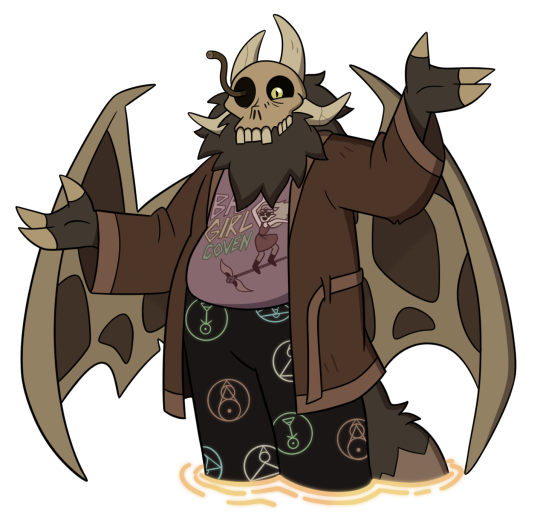
Seeing The Titan from The Owl House present themselves as bigender being was beyond awesome.
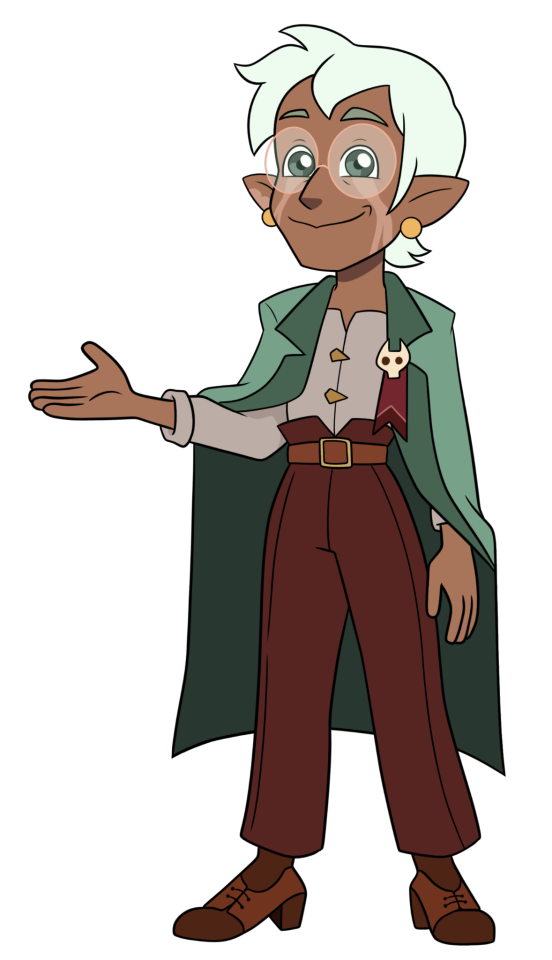
Not to mention that, while I don't know if they can be counted as such, Raine Whispers perfectly captures an androgynous non-gender specified appearance.

Or the amazing Body Swap mode that Shovel Knight offers to it's players. In which you are not only able to genderswap any important member of the original cast (and thus create semi-canon queer romances 😉), but also put your titular protagonist into a female body while giving then gender neutral or even masculine pronouns.
And how a very similar thing is included in the critically acclaimed masterpiece that is Elden Ring.

In which you are not just able to change your character's gender and body type at will, but also experiment with them. Putting a female head on a male protagonist (and vice versa) is a memorable and progressive feature for sure.
Sadly, however
Such portrayals aren't always in positive light.
One of my all time fav 3D Platformer franchises, Ty The Tasmanian Tiger, does include a villainous eldritch race of hermaphroditic shape-shifting extraterrestrials known as "Quinkans". Who serve as the main antagonists of the 3rd installment.
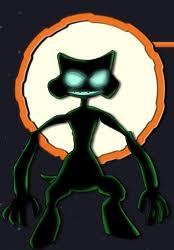
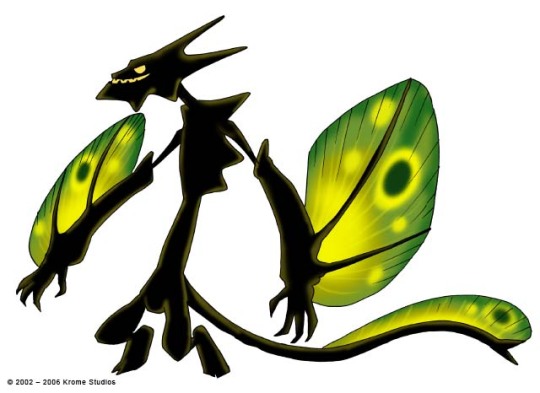
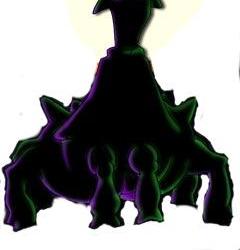
This also applies to old myths.
Take the old Romani mythology that includes a horrific self-fertilizing Poreskoro
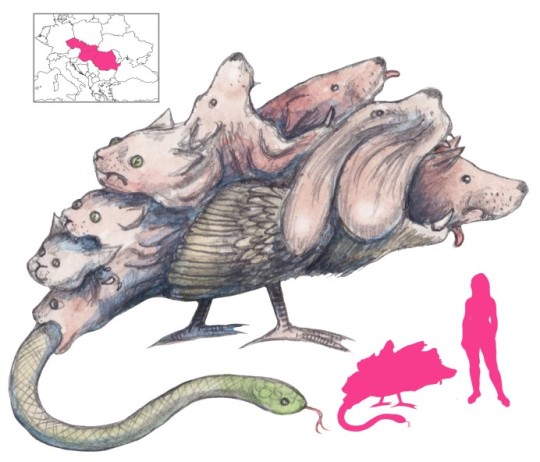
The progenitor of many illnesses that wreak havoc upon humanity to this very day.
But as with everything else. Bad ones should be separated from the good portrayals and not be taken as the root of all beliefs, thus giving rise to prejudices and negative assumptions.
And for the sake of not making this post hours long, I shall just end it by announcing my support for all the other people who feel similarly about themselves. And to say that it feels so very liberating to be true to one's self.
Yes I AM a guy. But I am also equally a woman. Not neither. But both. And I am so very glad to be a part of this wonderful social media where differences between people are highly celebrated and explored.
And I want to thank anyone who took time and energy to read through this little article of mine. Hope it wasn't too long or tedious to read.
And with that, I wish you all a wonderful day 💐💖
#confession#lgbtqia#self reflection#intersex#gay#gender dysphoria#self discovery#nonbinary#the owl house#fictional examples#queer representation#hindu mythology#mythology and folklore#greek mythology#third-gender#hermaphrodite#two spirit#bisexual#pansexual#gender
4 notes
·
View notes
Text
I wish there was a search engine of artifacts and art only. I don't want to see most people's modern fanart or products named after this historical thing. I want to see the thing or drawings of the thing from the period.
#cipher talk#Me trying to research anything Egyptian is like this but ancient Egypt is always terrible#I'm trying to find info on the full body tree halo and representations of guys sitting on lotuses bc I'm seeing some references in#Contemporary coptic icons and it tickles my brain#Nothing on the former and the latter is really hard to find images of#The most ones I found in one place were a... Hindu conspiracy post that ancient Egyptians worshipped Hindu gods#So actual discussion of symbolism in Egypt is. Ugh#Well the former is also hard to find images of. No ones named it or acknowledged it yet it seems#I only made the connection after looking at a contemporary painters stuff and figuring out where I'd seen it before
8 notes
·
View notes
Text
I need Percy Jackson esque books about Hindu mythology and i need them NOW!!
#percy jackson#percy pjo#percy jackson and the olympians#heroes of olympus#i kid you not i am yEARNING#for books like that#with accurate representation of hindu myths and epics#with all the lgbt representation we deserve#bc we been knew hinduism was okay with lgbt back in the Olde days#GIVE ME BOOKS LIKE THIS PLEASE I AM BEGGING YOU
23 notes
·
View notes
Text
just watched ep 5 of ms marvel last night without watching the other episodes and cried basically all the way through
#I’ve never felt more seen#is it because they were mentioning the partition?#is it because of the representation?#i also really liked how they said the line ‘Hindu majority’ instead of just labelling india as only Hindu#it’s like a hello to Sikhs jains and other minority religions#and the music 😭😭#anyway#ellie’s thoughts
4 notes
·
View notes
Text
Arthur Schopenhauer: An hour's reading
Arthur Schopenhauer (Photo credit: Wikipedia)
“I’ve never know any trouble than an hour’s reading didn’t assuage.”
—Arthur Schopenhauer.

View On WordPress
#Arthur Schopenhauer#Arts#education#Hindu#philosophy#Recreation and Sports#Road#The World as Will and Representation
0 notes
Text
#Ram Lalla Idol#Hindu deity#Lord Rama#Hinduism#Religious iconography#Spiritual symbolism#Divine representation#Religious artifact#Sacred sculpture#Worship symbol
0 notes
Text
for me, the heart of monkey man was its immense love for india, and the confidence of articulating that love through representation and criticism—the things that make india beautiful are not the colorist, hindu-nationalist propoganda stories of bollywood but largeness of the diaspora: indians who trans, who are muslim, who have been oppressed by their government, who are unacknowledged by society, etc—and prevail despite the odds stacked against them. they are encouraged to be themselves and fight against these occupational forces.
major props to dev patel for showing that hey, you actually can make a movie about indians in a way that perfectly encapsulates the various cultures, mythologies, AND egregious political climate, while also highlighting indian people and giving them the recognition and respect they often don't recieve in western—OR bollywood—canon. now that we know it's possible (it always was) i want more! thanks!
(also it helped that he was either in a suit, shirtless, or covered in blood [sometimes two at a time] for most of this movie. dev patel, i literally only need one chance...)
2K notes
·
View notes
Text
South Asian and Hindu Influences in ATLA (Part 1)
disclaimer: i was raised culturally and religiously hindu, and though i've tried to do my research for this post and pair it with my own cultural knowledge, i'm not an expert on hinduism by any means. should i mess up, please let me know.
please also be aware that many of the concepts discussed in this post overlap heavily with religions such as buddhism and jainism, which might have different interpretations and representations. as i'm not from those religions or cultures, i don't want to speak on them, but if anyone with that knowledge wishes to add on, please feel free.
it's well-known that atla draws from indigenous, east and southeast asian influences, but something i rarely see discussed in the fandom is the influences the show takes from hinduism and south asia, and there are actually far more than i think people are aware of.
so here's a (non-exhaustive list) of the main inspirations atla drew from south asian culture and hinduism, starting with...
The Avatar
the title of the show itself is taken from the ancient language of sanskrit, often considered the sacred tongue of the hindu religion. in sanskrit, the word "avatar" means to "descend" or "alight".
the concept of the avatar is a very old one, referring to the physical incarnation of a powerful deity or spirit. the idea of the avatar is most often linked to the god Vishnu, one of three supreme hindu gods collectively called the trimurti, or trinity. the avatar is said to manifest upon earth primarily in times of great need, when balance must be maintained between the forces of good and evil.
atla borrows heavily from this idea in having aang be the incarnation of a divine spirit who returns to the world during a time of immense strife, and is tasked with defeating a great evil to bring balance back to the world. and though i don't know if it was an intentional reference, it's interesting to note that Krishna, the most famous incarnation of Vishnu was also reborn amidst a fierce storm and carried through a raging sea to a new home where he would be protected from the king who sought to kill him. sounds a little familiar, doesn't it?
Agni Kai and the Philosophy of Firebending
the word "agni" derives from the sanskrit name Agni, the god of fire, though it can also generally mean "fire".
the concepts of lightning bending and the sun being the source of firebending are likely also taken from the idea of Agni, since he's said to exist simultaneously in three different forms on three different dimensions: as fire on earth, as lightning in the atmosphere, and as the sun in the sky.
Agni is a significant aspect of many rituals, including marriage rites, death rites, and the festivals of holi and diwali. the concept of Agni is one of duality: life and death, rebirth and destruction. hindu rituals accept and celebrate both aspects, revolving around the idea that destruction is not separate from creation, but rather necessary to facilitate it. the cremation of the dead, for instance, is seen as purification, not destruction: burning away the physical form so the soul is unencumbered, set free to continue the reincarnation cycle.
this influence can be seen in the firebending masters episode, which discusses the idea of fire being vital to life. the sun warriors safeguarding the original fire and demanding that zuko and aang bring fire to the dragons as a sacrifice could also reference the ritual of Agnihotra - the ritual of keeping a fire at the home hearth and making offerings to it. the purpose of this ritual differs depending on which text you refer to, but it is generally believed to purify the person and atmosphere in which it is performed, similar to how zuko and aang must make offerings to ran and shaw and survive their fire before being deemed worthy and pure.
Agnihotra is said to serve as a symbolic reminder of the vitality and importance of fire as the driving force of life, a lesson that zuko and aang also internalize from their encounter with the dragons.
Bumi
bumi's name is taken from the sanskrit word "bhumi", which means "earth". it's also the name of the hindu goddess of the earth, bumi or bhudevi.
one of the things the original animation didn't do and which i really enjoyed about the live action was that they made bumi indian and added desi inspiration to omashu. it makes perfect sense for a king whose name is as hindu-inspired as they come.
NWT Royal Palace
chief arnook's palace in the northern water tribe takes inspiration from the gopurams of hindu temples, massive pyramidal structures that served as entrance towers to the temple.
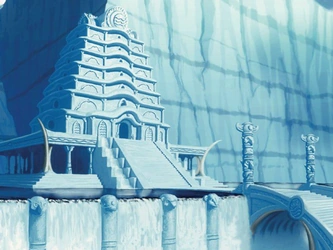

gopurams were built tall enough to be seen for miles around, beacons to signal tired or weary travellers who wished for a place to rest that a temple was nearby. it's a nice touch that the chief's palace is located in front of the spirit oasis, a similarly symbolic entryway to a sanctuary housing otherworldly deities.
Betrothal Necklaces
to preface: i doubt this was an intentional reference, and this great post talks about other cultures that could have inspired the water tribe betrothal necklaces. given the desi influence in the nwt architecture however, i figured it was worth mentioning.
the idea of betrothal necklaces being given to women by their male partners is similar to the thaali, a necklace given to hindu wives by their husbands. during hindu weddings, grooms tie the thaali around their brides' necks to symbolize their marriage. once given, wives are expected to wear their thaali till the day they die, as doing so is believed to bring good luck, health and prosperity to their husbands.
Chi-Blocking
though chi-blocking takes primary inspiration from the art of Dim Mak, it is also influenced by the south indian martial arts forms of adimurai and kalaripayattu, both of which include techniques of striking vital points in the body to disable or kill an opponent.
kalaripayattu also shares parallels with firebending, being a very physically demanding, aggressive martial art that emphasises the importance of discipline and mental fortitude. control of the mind is essential to control of the body, a philosophy similar to that espoused by iroh across the show.
Wan Shi Tong's Library
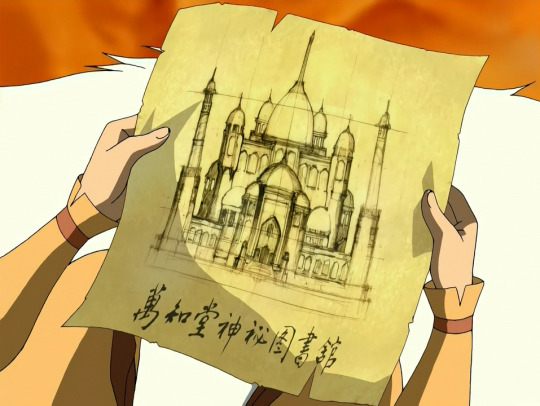
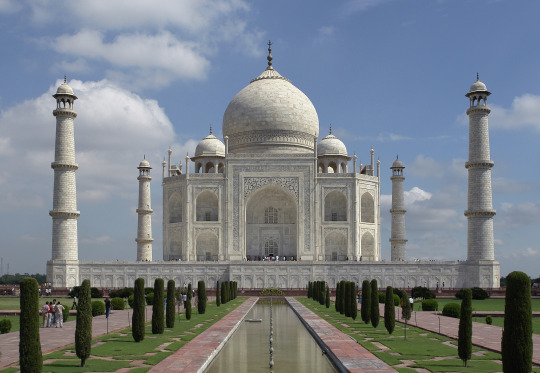
the library draws inspiration partly from the taj mahal, the famous mausoleum constructed by shah jahan during the mughal empire as a monument to his beloved wife, mumtaz mahal.
i'll end this post here since it's getting too long as it is, and the following section will be even longer. for while atla treated the concepts in this post with respect, the same unfortunately cannot be said for its depiction of guru pathik and combustion man - both of which we'll be discussing next.
789 notes
·
View notes
Text
Gender Fluidity, non-heterosexual, and gender variance behavior in mythology.
For the purpose of this thread, and keeping it short cuz even though this is my off month to finally rest from burn out, I've got publishing obligations, signings, and stuff to do -- we're keeping-- this to South Asian mythology:
I've already done a thread about third sex/intersex and trans (Hijra) in South Asian culture and the portrayals in a pop culture IP recently - Monkey Man by Dev Patel --
This is a short primer really:
Harihara - the union representing totality/oneness of all existence is the being born of the union of Shiva and Vishnu (who at prior to this morphs into Mohini, the female celestial temptress who Shiva becomes besotted with and tries to get intimate with), Vishnu changes back amidst this and the two fuse into a being. The ability of celestial beings | gods | goddesses to morph, change shape and gender in Vedic to Hindu mythology is well-established/normal. But there are many legends about Mohini, including the birth of her (Vishnu, his female avatar form being Mohini) son, Shasta, with Shiva. Mohini is also known as a femme fatale archetype, seducer, temptress, as well as someone known for destroying/seducing demons to their doom.
One thing to remember is that the Vedic religion and its stories are old, older than our records because the stories, songs, poetry of it all existed before written records and were transmitted orally. There are also varied versions of the epics, such as Tamil recountings of Mahabharata for example, in where one such example exists.
Krishna also takes the form of Mohini to marry Aravan (in Tamil) Iravan otherwise to give Aravan the chance to experience love before his death. There is a festival celebrated to this in the month of Chitrai (April/May) at the Koothandavar Temple dedicated to Iravan during which, Hijras (the third sex, transgender, intersex, and or eunuchs as well) celebrate Krishna/Mohini marrying Aravan and then mourn Aravan/Iravan's death as he sacrificed himself.
It must be noted that there is artwork and mention throughout the wide spread of Vedic upwards stories (and how many interpretations, takes, and varies stories there are) of same sex and yonic/non-vaginal sex relationships, births, and more.
There's also inter-being...?


Erotica/romance authors help me out here? Inter...celestial sex?
Apsara, devas, asura, humans, demigods. Look, lots of sex of all kind happens, and it's normal.
There's also the story of Arjuna to consider: when he refuses the seductive advances of Urvashi, she curses him to be a Klba, or member of the third gender. Later when Arjuna adopts the name of Brihannala, the curse takes effect as Arjuna dresses in women's clothing, and because of this, Arjuna is able to gain entrance to the kingdom of Virata in the Padma Purana and teach the high arts of music, singing, and dance, to the king's daughter and princess. Later, he is turned into a woman when he wishes to take part in Krishna's mystical dance which only women may attend.
Then there is Ila, a character cursed by Shiva and Parvati to change genders each month.
NOTE: there are MANY versions of the story of Ila, but it is canonical they changed gender -- known as Sudyumna as a woman, and Ila as a man.
Ilā is considered the chief progenitor of the Lunar dynasty of Indian kings – also known as the Aillas.
Continuing. In one story, Ila marries Budha (not Buddha the former king and founder of Buddhism), but Budha that is the god Mercury -- Budha is aware of Ila's origins as a man and changing status, but only marries Ila in his feminine state, and honoring that part of them as his wife and only when Ila is in that state. He does not enlighten Ila to the changing effect as each gender is unaware of the other and those lives.
The tale of Ila's transformations is told in the Puranas as well as the Indian epic poems, the Ramayana and the Mahabharata.
This is just a little thread. Anyways, I'm off now to sign nearly 2000 pages (won't finish today) and have an achey hand while I do more research and trying to improve the prose style I want for book three of Tales of Tremaine.
❤️ thank you. Remember, be kind.
#gender fluid#gender variance#genderfluid#south asian mythos#south asian mythology#third sex#intersex#gender is a social construct#gender in lore#epic poems#ramayana#mahabharata#trans representation#transgender#sudyama and Ila#pride month#trans pride#thanks for coming to my ted talk#monkey man#gods and goddesses#hindu gods#hindu mythology#vedic gods
13 notes
·
View notes
Note
There is a difference between Bollywood and Bombay cinema?
listen, subcontinental cinema began in bombay; the very first exhibition of the lumieres' cinematographe was held there in 1896, a few months after its debut in paris, 1895. this event predates the discursive existence of bollywood and hollywood. shree pundalik and raja harishchandra, the films that are generally considered the very first subcontinental features were also exhibited there first.
subcontinental cinema under british colonialism was produced in certain metropolitan centers such as lahore, hyderabad, and calcutta; bombay was just one of them. in 1947, when the indian nation state was formally inaugurated, the idea of a "national cinema" began forming, but given the cultural and linguistic heterogeneity of the indian union, this was quite untenable. regional popular cinemas flourished well into the 1950, 60s, 70s, and 80s and various art cinemas began taking shape alongside.
under the economy that i'm going to completely elide as "nehruvian "socialism"" bombay cinema focused on broadly "socialist" themes, think of awara (1951), do beegha zameen (1953), pyaasa (1957), all of which focus on inequality in indian economy and society from different perspectives. these films were peppered in with historical dramas, and adaptations from literature, but the original stories tended towards socialist realism. reformist films centering the family generally waxed poetic on the need to reform the family, but i haven't seen enough of these to really comment on them.
the biggest hit of the 70s, sholay (1975) was about two criminals, posited as heroes fighting gabbar singh who was attacking village folk. deewar (1975) also had two heroes, and the stakes were the two brothers' father's reputation; the father in question was a trade union leader accused of corruption.
"alternative cinema" included mani kaul's uski roti (1969) and Duvidha (1973) both of which were situated away from the city. then there's sayeed mirza and his city films, most of them set in bombay; arvind desai ki ajeeb dastan (1978), albert pinto ko gussa kyun aata hain (1980), saleem langre pe mat ro (1989) which are all extremely socialist films, albert pinto was set in the times of the bombay textiles strike of 1982 and literally quotes marx at one point. my point is that bombay cinema prior to liberalization was varied in its themes and representations, and it wasn't interested in being a "national cinema" very much, it was either interested in maximizing its domestic profits or being high art. note that these are all hindi language films, produced in bombay, or at least using capital from bombay. pyaasa, interestingly enough is set in calcutta, but it was filmed in bombay!
then we come to the 1990s, and i think the ur example of the bollywood film is dilwale dulhania le jayenge (1995) which, in stark contrast to the cinema that preceded it, centered two NRIs, simran and raj, who meet abroad, but epitomize their love in india, and go back to england (america?) as indians with indian culture. this begins a long saga of films originating largely in bombay that target a global audience of both indians and foreigners, in order to export an idea of india to the world. this is crucial for a rapidly neoliberalizing economy, and it coincides with the rise of the hindu right. gradually, urdu recedes from dialogue, the hindi is sankritized and cut with english, the indian family is at the center in a way that's very different for the social reform films of the 50s and 60s. dil chahta hai (2001) happens, where good little indian boys go to indian college, but their careers take them abroad. swadesh (2004) is about shah rukh khan learning that he's needed in india to solve its problems and leaves a job at NASA.
these are incidental, anecdotal illustrations of the differences in narrative for these separate eras of cinema, but let me ground it economically and say that bollywood cinema seeks investments and profits from abroad as well as acclaim and viewership from domestic audiences, in a way that the bombay cinema before it did not, despite the success of shree 420 (1955) in the soviet union; there were outliers, there always have been.
there's also a lot to say about narrative and style in bombay cinema (incredibly diverse) and bollywood cinema (very specific use of hollywood continuity, intercut with musical sequences, also drawn from hollywood). essentially, the histories, political economies, and aesthetics of these cinemas are too differentiated to consider them the same. bombay cinema is further internally differentiated, and that's a different story altogether. look, i could write a monograph on this, but that would take time, so let me add some reading material that will elucidate this without sounding quite as fragmented.
bollywood and globalization: indian popular cinema, nation, and diaspora, rini bhattacharya mehta and rajeshwari v. pandharipande (eds)
ideology of the hindi film: a historical construction, madhav prasad
the 'bollywoodization' of the indian cinema: cultural nationalism in a global arena, ashish rajadhyaksha
the globalization of bollywood: an ethnography of non-elite audiences in india, shakuntala rao
indian film, erik barnouw and s. krishnaswamy (this one's a straight history of subcontinental cinema up to the 60s, nothing to do with bollywood, it's just important because the word bollywood never comes up in it despite the heavy focus on hindi films from bombay, illustrating my point)
433 notes
·
View notes
Text
𝑵𝒂𝒌𝒔𝒉𝒂𝒕𝒓𝒂𝒔 𝒂𝒏𝒅 𝒃𝒊𝒓𝒅𝒔 𝒕𝒉𝒓𝒐𝒖𝒈𝒉 𝒎𝒚𝒕𝒉𝒐𝒍𝒐𝒈𝒚 𝒂𝒏𝒅 𝒊𝒏𝒕𝒆𝒓𝒑𝒓𝒆𝒕𝒂𝒕𝒊𝒐𝒏
✵ 𝗖𝗿𝗼𝘄 /𝗞𝗮𝗸𝗮
Crow is the animal associated with krittika , pushya , hasta , jyestha , dhanistha
Crows are associated with being the vahan of shani dev , they are a connecting link between the human world and The spirit world , it is believed that our ancestors come in the form of crows to get food and offer us blessings , it is also believed that the caretaker of the crow will achieve blessings from all gods and reach salvation after death
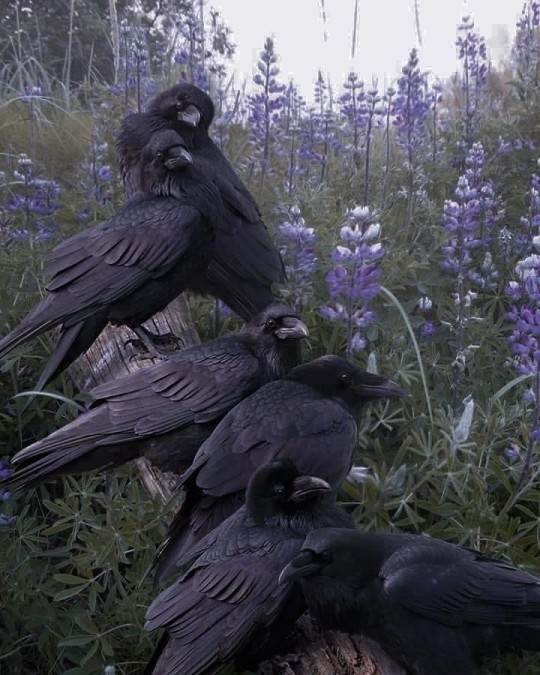
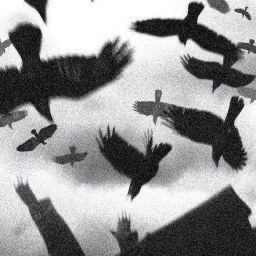
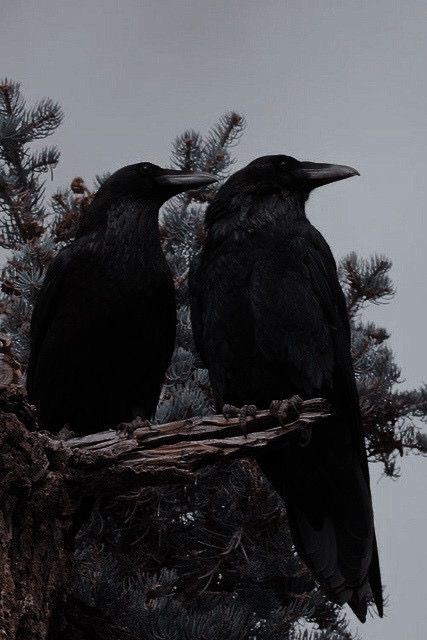
Mythology and lore :
The black crow, also known as a raven in some regions is said to possess clairvoyance by which he can see different worlds,is the tale of KakBhushundi, mentioned in Tulasi’ Das’s epic poem ‘Ramacharitamanas’. Bhusundi who was an ardent devotee of Ram had no respect or devotion for any representation God other than Lord Ram. His guru sage Lomas tried to correct this attitude by teaching him to develop devotion for nirguna brahman or the formless aspect of God. But Bhusundi ignored his guru’s teachings and kept on worshipping Ram as the Ultimate Truth. In a fit of anger Sage Lomasha cursed Bhusundi to become a crow because of his repeated rejection and arguments against the sage’s guidance and advice. When Lord Ram intervened on behalf of Bhusundi, Sage Lomas relented and recalled Basundi who was now in the form of a crow as ‘KakBhushundi’ or Bhusundi the crow and taught him Ramcharitmanas, stories about Rama’s spiritual journey. Thus KakBhusundi in the form of a crow became the ultimate narrator of the events in the life of Lord Rama. He was also blessed with the ability to travel through time and recreate the story of Lord Rama.
He witnessed a cosmic vision in Rama's mouth, observing millions of suns and moons within, and a vision of the sage himself in Ayodhya within each celestial object. He resided within each of these realms for centuries, and returned from Rama's mouth to find himself return to the same moment in time as he had left. Bewildered, he begged for Rama's salvation, and was promptly blessed with the same. He chose to forever remain in the form of a crow as he had been blessed by his favoured deity in that form.
during the shraddha ceremony or oblation offered to ancestors, a ball of cooked rice ( pind) is offered to the dead ancestor. If crows eat ( touch/peck) it, then it is assumed that the dead ancestor’s soul has been released from his or her bindings with the physical body and has embarked on the continuation of the soul’s journey to the next level of existence. In this rite, crows touching the rice ball is considered auspicious and is also seen as a good omen.they are of particular interest in Tantric narratives and Tantric rituals. In the general Hindu context, the crow is often stereotyped as inauspicious and its role limited to that of vāhana (vehicle of a deity). Conversely, in Tantric ritual manuals, the crow’s sphere of influence is based on a broader concept. Such scriptures imply ominous and ‘dark’ aspects of agency in crows, but they do so in a strikingly different way than Hindu classic mythology. Tantra emphasise an ambivalent potential in crows as beneficial to certain rituals and occasionally incorporate a ‘crow potency’ in ritual instructions.
They are the very powerful healers who are able to locate the shadows that create distress for people and bring blind dark spots to awareness in people so healing can ensue. Spending long periods in the dark gives one this Siddhi.Shuni Kah is the Crow of the Dark Moon who has access to the never regions. He is the one in us to bring the eye to the underground sediment that toxifies our lives. If this unresolved sediment it is left in the unseen world there is no healing.Shuni Kah the Crow and gatekeeper to the world of dreams is the grand healer. Just singing his name is a powerful mantra that causes us to see in the dark.
The entrance to Shuni is through the femminine. His Mother is Chaya, the Shadow Woman, and his father is Surya, the Sun. His Mother was not able to realise her power beside her Husband, the sun, for his glow burned and make her feel overwhelmed and insignificant and so she fled leaving behind her shadow.This signifies how the Feminine is brought into insignificance when the Solar or active force is ruled over her.Having left her Shadow with her husband, Shuni’s mother whilst still pregnant performed prayers and yogic austerity to Shiva under intense heat. Her effort was so great and the heat generated became so hot that her child, Shuni, was burned black.This signifies how heat and tapasya (yogic purifying Fire of austerity) reveals the darkness within the unconscious recesses of one’s being.When Shuni was born and seen in his blackness, his father was shocked at how dark he was refused to recognise him as his child, accusing his wife of being unfaithful. He raged greatly and insulted his wife. Seeing his Mother thus insulted raised Shuni’s wrath. Thus Shuni’s gazes is ever down in the underworld and arouses suffering.He Rides on the Crow and his wife rides on the Swan.One is the bird of the underworld and the other is the bird of the Celestial spheres
The completion of Tantrais known as the Kiss of Crow & Swan.The meeting of opposites.She rides a chariot pulled by crows and has a flag with crow emblem (Kak Dwhajini). She has a voice of howling jackals. Dhumavati
In Celtic mythology, the warrior goddess known as the Morrighan often appears in the form of a crow or raven or is seen accompanied by a group of them. Typically, these birds appear in groups of three, and they are seen as a sign that the Morrighan is watching—or possibly getting ready to pay someone a visit.

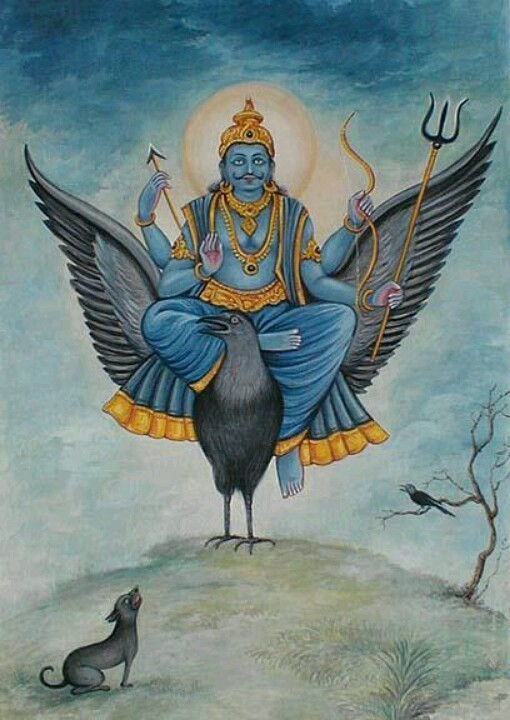

In some tales of the Welsh myth cycle, the Mabinogion, the raven is a harbinger of death. Witches and sorcerers were believed to have the ability to transform themselves into ravens and fly away, thus enabling them to evade capture.Odin is often represented by the raven—usually a pair of them. Early artwork depicts him as being accompanied by two black birds, who are described in the Eddas as Huginn and Munnin. Their names translate to “thought” and “memory,” and their job is to serve as Odin’s spies, bringing him news each night from the land of men. For the ancient Greeks, the crow was a symbol of Apollo in his role as god of prophecy. Augury—divination using birds—was popular among both the Greeks and the Romans, and augurs interpreted messages based on not only the color of a bird but the direction from which it flew. A crow flying in from the east or south was considered favorable.Genesis tells us that after the flood waters receded, the raven was the first bird Noah sent out from the ark to find land. Also, in the Hebrew Talmud, ravens are credited with teaching mankind how to deal with death; when Cain slew Abel, a raven showed Adam and Eve how to bury the body, because they had never done so before.Philo of Alexandria (first century AD), who interpreted the Bible allegorically, stated that Noah's raven was a symbol of vice, whereas the dove was a symbol of virtue (Questions and Answers on Genesis 2:38)In the Story of Bhusunda, a chapter of the Yoga Vasistha, a very old sage in the form of a crow, Bhusunda, recalls a succession of epochs in the earth's history, as described in Hindu cosmology. He survived several destructions, living on a wish-fulfilling tree on Mount Meru.[24]
The Lesser Key of Solomon: Goetia, The Book of Evil SpiritsStolas, the 36th demon in the pantheon, will first appear as a raven when summoned. Once he becomes a man, he teaches the arts and astronomy, as well as the properties of precious stones and the healing properties of herbs. Malphas, the 39th demon, appears as a crow and won’t change form until ordered. In his human form, he can build homes and fortifications and can give his summoner a familiar
Raven overheard the old man talking to himself about a box he possessed. The box contained a series of ever-smaller boxes, and inside the smallest box was all the light in the world—which Raven decided to steal.There seemed to be no door into the house, so Raven waited until the man’s daughter went to a nearby stream, then changed himself into a hemlock needle in the water, which the girl drank. Raven changed himself into a baby once he was inside her, and once he was born (an odd-looking half-bird, half-boy creature whose true nature was hidden by the darkness), he demanded to be allowed to play with the boxes. One by one, Raven demanded the first box, then the second, and so on. Finally, he convinced his grandfather to open the innermost box and let him play with the ball that was the light. As soon as Raven had the light, he took off with it gripped in his beak.The light spilled from the ball and over the world, but it wasn’t long before Eagle gave chase. As Raven fled, pieces of the light fell to the ground and shattered, bouncing back into the sky to create the Moon and the stars. Other pieces of the light slowly fell as Raven made his way around the world, which is why the light travels across the sky the way it does.Theories suggest that the three legs represent the three ancient clans of Japan or the three virtues of valor, benevolence, and wisdom. Some suggest that the three stands for mankind, heaven, and Earth. Regardless of why Yatagarasu has three legs, he’s seen as symbolic of the navigator, physical and spiritual, and he’s even been adopted by the Japanese soccer association in the hopes that he’ll help navigate the ball into the goal. He’s also closely associated with Kumano, the birthplace of the founder of the sport in Japan
The raven is considered one of the smartest birds. In fact, the raven’s brain is among the largest of any bird species. Ravens also happen to possess an extraordinary number of brain cells compared to the brains of other birds.3When the raven is your spirit animal, you are being called upon to rely on your wits in a given situation or when you are faced with a challenge in your life. Often in life, we can go on automatic pilot, accepting things the way they are, or thinking we don’t have the capacity to change them.The raven spirit animal tells you that with innovation and creative thinking, you can influence outcomes that affect the course of your life. Even if you feel emotional about a situation, remember to rely on the gift of your intellect to solve your problems. This is how you gain deeper intelligence and wisdom.\
Charles Dickens’ Barnaby Rudge: A Tale of the Riots of Eighty. In both tales, the raven is at first disturbing to the character who interacts with him. But then he provides important insights. Indeed, the raven expands both of the main characters’ level of consciousness.
In many Native American legends, the raven is the wisest of birds, even possessing the ability to speak.8 (In fact, this is an interesting parallel between Native American legends and stories from other cultures, such as Edgar Allan Poe’s The Raven, in which the intelligent black bird is capable of human speech.The Egyptian goddess Nepthys, who is the sister of Isis, was the goddess of the dead.13 It’s clear that the ancient Egyptians also connected the raven with death, as they associated Nepthys with this intelligence black bird.
Meaning: Survival and Adaptability
Intuition – Because the raven is so closely associated with clairvoyance and prophecy, on a spiritual level, they remind us of our own ability to connect with our Higher Power and higher spiritual entities through our own minds.
Spiritual Guidance – As they are associated with insight and guidance, the raven is also a symbol for spiritual education. We are all works in progress. Learning about spirituality from more enlightened souls can lead to our own spiritual growth.
Spiritual Transformation – As a powerful symbol of transformation, the raven also embodies the idea of shifting consciousness and opening our minds to greater awareness as we navigate our spiritual journey. reflect on the areas of your life that they might relate to. Even an anxious raven dream can be a gift. It can prompt you to take the time to be an objective observer of your own thoughts. Then, you can improve situations without getting pulled in every direction your thoughts might take.
Sources :
1 2 3
Through various nakshatras
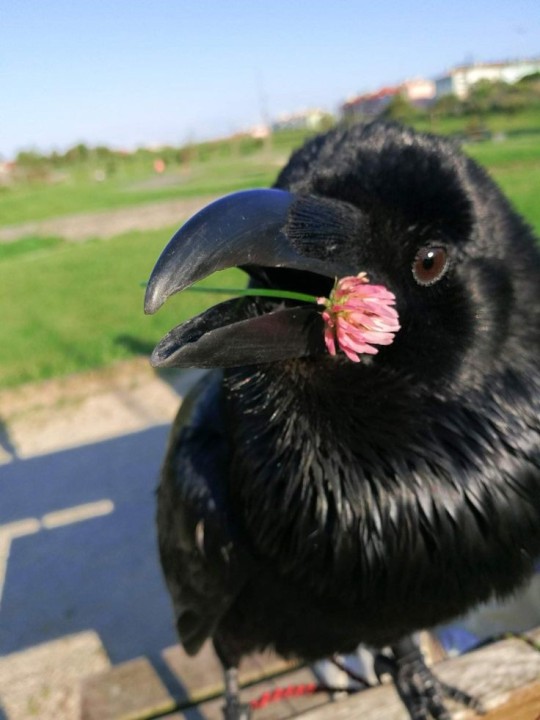
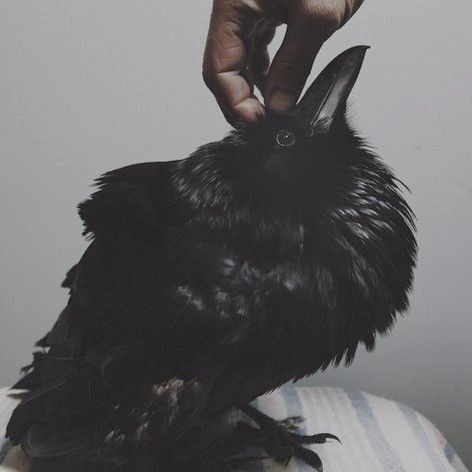
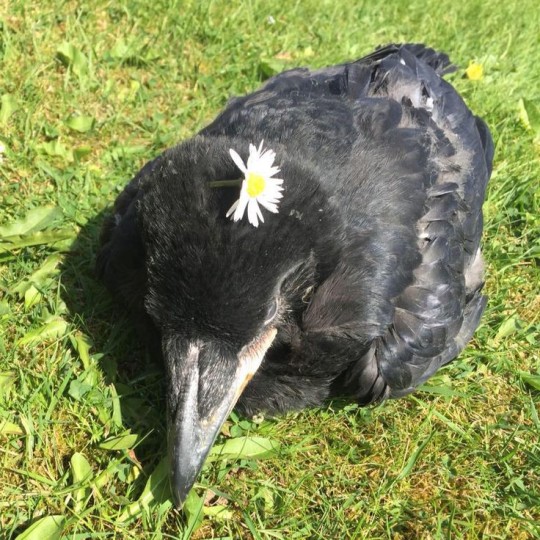
Interpretations are solely based on my understanding and you can have your interpretation as well ❤️
Krittika nakshatra
Krittika is a churner of perfection under the fire of Surya that gave birth to Shani through his mother chaya the first conception of the birth of a crow comes through while Shani is associated with crows , the struggles of not being seen enough is associated here , the outcast themes come through. Along with that the perfection theme while a crow collects the most beautiful stuff to keep in it's nest , it knows what's valuable like krittika sees the value in things , they know what they want and they attempt to take it . Here this relates to the story of yatagarasu believed to be an incarnation of the sun in Shinto mythology. This also associates with Apollo being the god of prophecy and taking the form of a crow , shows that where there exists light ( Surya ) there Exists chaya , they aren't on a scale of horizontal extremes but the flip sides of a coin, one cannot exist without the other , in krittika lies the light so lies the dark , lies the beauty of creation so lies the pain of change .
Pushya nakshatra
Pushya nakshatra ruled by Saturn comes in through the first liberation through pain and trials in the lives of the natives , like a crow one suffers despite what others say , people say various things without knowing about the wisdom of the crow , this forms the initiation of intuition . While pushya relates to the nourishing aspect of a crow , how they hunt for their young ones , how they know pain because they have been the one experiencing it , being outcast only affects them for a small time because they pick themselves up like a true winner. . Here the intelligence and creativity given by the raven shines through with the light of the moon .
Hasta nakshatra:
The playful nature of mercury- moon shines through the crow in being a lover for finer things in life , they are the intelligent ones the smart ones , they are often called deceptive , but that's just cleverness put to use , while the significance here can be seen through the story of raven (mentioned above) stealing the box which contained all the light of the world and convincing the old man to open the box , natives have great communication skills and can easily convince people. As the eagle chased the raven the moon and the stars were created , signified by the moon hasta creates their own pathway through their own efforts. By hook or by crook they get what they desire .
Jyestha nakshatra:
In Jyestha nakshatra comes in the prophetic and astrological nature of the natives . Jyestha nakshatra is associated with the 8th house , hence death and through the mahavidya Dhumavati who is also associated with crows , this nakshatra gives grounding, astrological talent to the one with this nakshatra. When the ceremonial rites of a dead person is performed offering food to a crow suggests the offerings being accepted by the dead , which is suggested here with Jyestha being in Scorpio. In tantra crows are seen as potent symbolism of intuition and transformation in various mythologies, crow is seen as transformation as is seen in Jyestha nakshatra.In the lesser key of solomon a crow reaches the art of divinitions and healing properties of crystals . A Jyestha native transforms throughout their lives and gains knowledge to become a spiritual centre of creativity and intuition. They bring in spirituality and astrology as 8th being the origin of astrology, they are potent in magical arts and healing others as well as themselves.
Dhanistha nakshatra :
When in dhanistha can be explained through the story of kakbhushundi , the disciple who turned into a crow in devotion to Rama , the solar avatar of Vishnu, kakbhushundi explores the spritual aspect of the crow , kakbhushundi who recited stories through ramacharitamanas . Dhanistha associated with Hanuman also shows the infinite devotion the crow bird and the natives of dhanistha have towards their adored and admired one , being a symbol of loyalty they are blessed with spiritual powers like kakbhushundi could travel through time and various realms , Dhanistha are blessed with the power to see various perspectives . Dhanistha natives are associated with the celestial form of a crow , the loyalty , the devotion and the spiritual salvation.

Thank you so much for reading, I hope this thread provided you valuable insights, please know that this is based on my understanding and interpretation I'm open to suggestions and corrections
Have a great day / night ahead 🤍
#vedic astrology#sidereal astrology#astrology#astro community#astrology readings#astrology community#krittika#hasta nakshatra#jyestha#pushya nakshatra#dhanistha
376 notes
·
View notes
Note
If you don't mind I have a question about Islamic culture, I'm thinking about how Christians have statues of Christ and saints, other religions have statues of the Buddah and Hindu gods, it's a very common thing across many religions. Judaism doesn't really have that as far as I know but there aren't really prophets in the same way as xtianity. But Islam does have various prophets and significant historical figures, but I have never seen any statues made in their images. Is this a thing, not allowed or just not culturally uh, common I guess? Thank you :3
Islam has always pertained to a rather iconoclastic tradition and has shown fierce opposition to visual imagery in various forms, while some schools and branches of Islam are not as strict. Historically, alternative forms of art have been produced as a result. Indeed, Islamic art are traditionally non-representational in the form of Islamic calliography and Islamic geometric patterns, which is usually seen in mosque, shrines and various Islamic buildings.
The basis for the impermissibility of such visual imagery in the form of sculptures or carved objects representing a living being is rooted in Islam's strict monotheistic approach. The nascent Muslim community had to deal with the polytheist tribe of Quraish which worshiped idols in the form of sculptures. The Prophet Muhammed (sawas) showed disdain for such worshiping and exemplified their uselessness to the people by throwing them to the ground.
However, while sculpturing is pretty much a non-go, this impermissibility is not extended to art in the form of two-dimensional figures. While various schools of Islam differ in the opinion of drawing, not all of them are unanimous, this has allowed for Islamic art to take the shape of form in different ways. For example, Shi'a Islam allows visual respresentation through the use of a two-dimensional surface, such as a canvas, regardless of whether it is a living being or not. This is why you'll find that art of the prophets, imams and the holy ladies are pretty commonplace among Shi'a Muslims.
While sculpturing any object representing a living being is unanimously considered impermissible in all Islamic schools of law, art in the form two-dimensional paintings are not.
142 notes
·
View notes
Text

A/N: Enjoy part 2 with Indra and Shiva!
●・○・●・○・●・○・●・○・●・○・●・○・●・○・●・○・●・○・●・

●・○・●・○・●・○・●・○・●・○・●・○・●・○・●・○・●・○・●・
⛈ He and you were fairly close, as the God of Lightning and Rain Storms respectively, you and him spent a lot of time managing the storms that plagued the Earth
⛈ Indra had major respect for you, and he even fought against Rudra and Shiva when they challenged you both, not wanting you to get hurt, he took your place
⛈ You were fairly close with many Hindu Gods, including Varuna, who, by many accounts, could be fairly teasing
⛈ And Indra saw that as a form of flirting (which is technically is, but you get the point)
⛈ He had come home from a nice walk and smoke through Svarga when he heard the familiar laugh coming from Varuna and you in another room
⛈ Indra looked inside your room and saw how Varuna was touching you, tickling your sides, causing a small rainstorm to accumulate outside, so, to make sure Shiva wouldn't yell at you for going ahead of schedule, he picked the God of Water up and laid him away from you
⛈ This made the sun come back out from behind the clouds
“ Varuna, you know what Shiva would say if the rain interrupted his training and was ahead of schedule. “
⛈ Varuna sighed and stood up, patting his fellow God’s shoulder and whispering in his ear, saying how he knew and was praying for it to happen
⛈ You were oblivious to it all, trying to tell the servants what happened and why it leaked rain, and hopefully you’d stay oblivious until he was ready to tell you
●・○・●・○・●・○・●・○・●・○・●・○・●・○・●・○・●・○・●・

●・○・●・○・●・○・●・○・●・○・●・○・●・○・●・○・●・○・●・
🪩 Okay, so, this guy is at a neutral level here
🪩 Everyone knew that Shiva has good choice in his relationships, I mean, have you seen his wives?
🪩 Shiva has a habit of teasing people a lot, which had led multiple Goddesses to believe he was flirting with them, when if fact, he was not
🪩 He was always the one who initiated flirting with you, and you still remain oblivious to his advances, to which his current wives, Druga, Kali, and Parvati just chuckle at
🪩 Since his wives were busy one day, he decided to visit you, his best friend alongside Rudra
🪩 He knew that you and Apollo were fairly close, as representations of the Sun and Light, but seeing how he rested a hand on your waist and holding you right hand towards the sun to help it move got him aggravated
🪩 Apollo and him weren’t the closest people around, and anyone could tell, but he can tolerate many people that others couldn't
🪩 But this was too far
🪩 He grabbed you and threw you over his shoulder and ended up glaring at the God of the Sun before walking away with you lightly punching his shoulder
“ What was that about, Shiva? “
“ Marry me. “
“ … huh?! “
#Record of Ragnarok#RoR#Shuumatsu no Valkyrie#SnV#RoR Hindu Pantheon#Record of Ragnarok Gods#RoR Gods#Record of Ragnarok x Reader#RoR x Reader#Shuumatsu no Valkyrie x Reader#RoR Hindu Pantheon x Reader#SnV x Reader#Record of Ragnarok Gods x Reader#RoR Gods x Reader#GN! Reader#God! Reader#S/O! Reader#RoR Indra#RoR Indra x Reader#RoR Shiva#RoR Shiva x Reader
149 notes
·
View notes